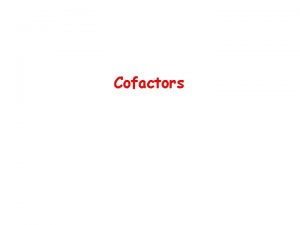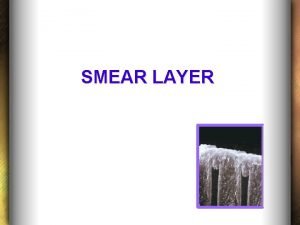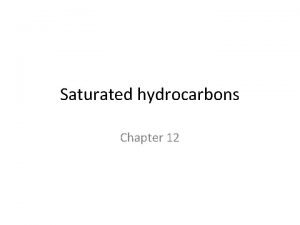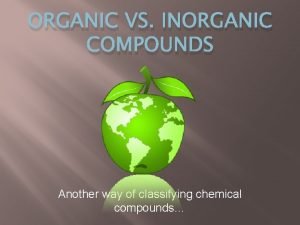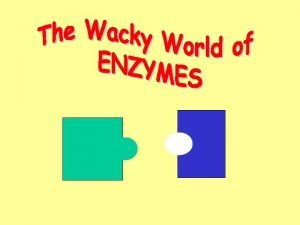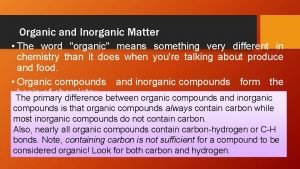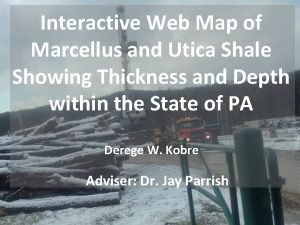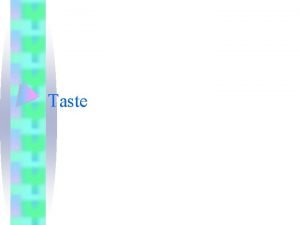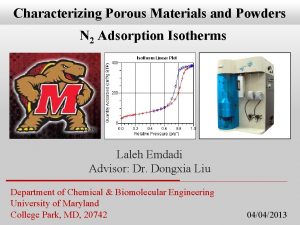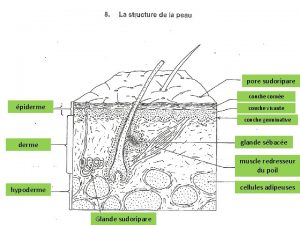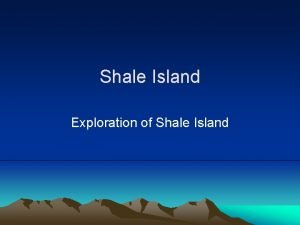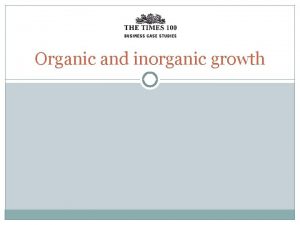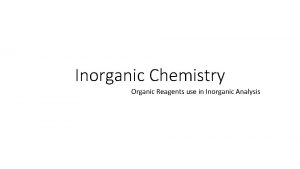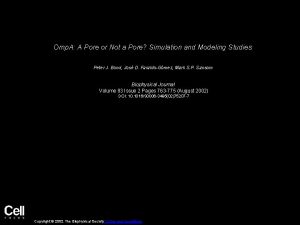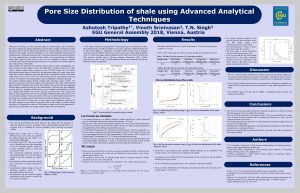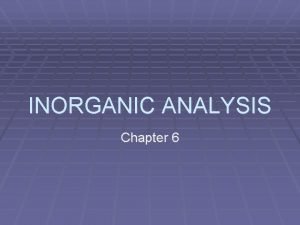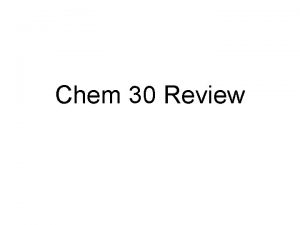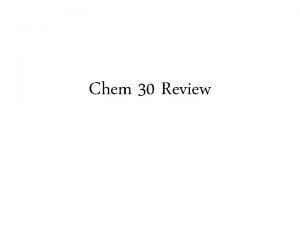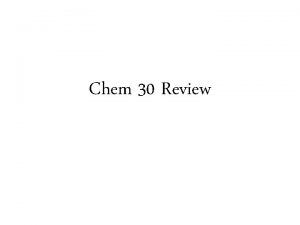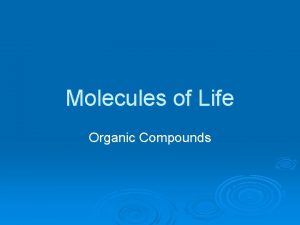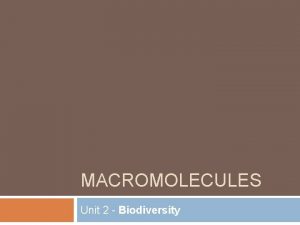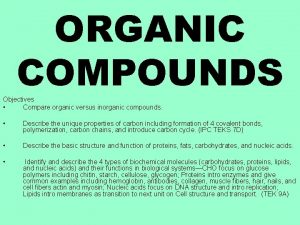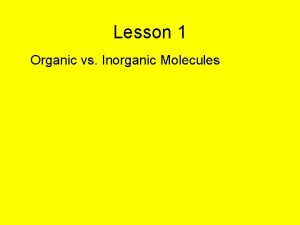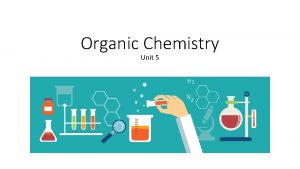Organic and Inorganic Pore Structure Analysis in Shale






















- Slides: 22

Organic and Inorganic Pore Structure Analysis in Shale Rocks with Superposition Method Dr. Chenchen Wang Prof. Zhangxing (John) Chen University of Calgary 06/14/2014 Slide RESERVOIR SIMULATION GROUP

Outline 1 Introduction 2 Methodology 3 Results and Discussions 4 5 Slide Conclusions Future Research RESERVOIR SIMULATION GROUP

1. Introduction Shale rocks are inherently heterogeneous and the shale matrix pores can be divided into organic and inorganic pores. The organic and inorganic pores are distributed with each other in the shale matrix. Organic matter: 3%-15% (Organic pores + few inorganic pores) Shale matrix Inorganic matter (Inorganic pores) Typical shale matrix SEM image with organic and inorganic pores Slide RESERVOIR SIMULATION GROUP

1. Introduction Different Scale Resolution Images Digital Rock Analysis Technology While the organic pores and inorganic pores in shale rocks are at different scales, and the transport mechanisms of shale gas in organic and inorganic pores are different, it is necessary to describe the nanoscopic organic and inorganic pore characteristics of shale rocks with a method, such as superposition, based on a digital rock analysis technology. Slide RESERVOIR SIMULATION GROUP

Outline 1 Introduction 2 Methodology 3 Results and Discussions 4 5 Slide Conclusions Future Research RESERVOIR SIMULATION GROUP

2. Methodology 2. 1 Image analysis and 3 D digital rock reconstruction SEM images Low resolution inorganic pore image Resolution: 25 nm High resolution organic pore image Resolution: 5 nm Binary images Inorganic pore binary image Slide 0: skeleton (white) 1: pore (black) RESERVOIR SIMULATION GROUP Organic pore binary image

2. Methodology 2. 1 Image analysis and 3 D digital rock reconstruction xy Markov Chain Monte Carlo (MCMC) Method yz xz Inorganic pore digital rock 216× 216 Slide RESERVOIR SIMULATION GROUP Organic pore digital rock 500× 500

2. Methodology 2. 2 Shale matrix digital rock superposition method Step 1. Superposition of representative shale organic matter digital rocks The sectional inorganic pore digital rock 100× 100 Inorganic pore digital rock 216× 216 Superposition algorithm: Ω: shale organic matter digital rock Ω 1: inorganic pore digital rock Ω 2: organic pore digital rock Slide RESERVOIR SIMULATION GROUP The sectional inorganic pore digital rock 500× 500

2. Methodology 2. 2 Shale matrix digital rock superposition method Step 1. Superposition of representative shale organic matter digital rocks The sectional inorganic pore digital rock 500× 500 Slide Organic pore digital rock 500× 500 RESERVOIR SIMULATION GROUP Representative shale organic matter digital rock 500× 500

2. Methodology 2. 2 Shale matrix digital rock superposition method Step 2. Integration of representative shale matrix digital rocks The remaining inorganic pore digital rock Slide Representative shale organic matter digital rock RESERVOIR SIMULATION GROUP Representative shale matrix digital rock

Outline 1 Introduction 2 Methodology 3 Results and Discussions 4 5 Slide Conclusions Future Research RESERVOIR SIMULATION GROUP

3. Results and Discussions Inorganic pore digital rock Slide Organic pore digital rock RESERVOIR SIMULATION GROUP Representative shale matrix digital rock

3. Results and Discussions Slide Inorganic Pore Digital Rock Organic Pore Digital Rock Shale Matrix Digital Rock Size 5. 4μm× 5. 4μm 2. 5μm× 2. 5μm 5. 4μm× 5. 4μm Pores Number 5, 158 92, 226 96, 541 Throats Number 7, 182 154, 848 160, 096 Average Connection Number 2. 7644 3. 34573 3. 99445 Net Porosity 0. 0783 0. 192 0. 102 Absolute Permeability (n. D) 19. 6 135 61. 2 RESERVOIR SIMULATION GROUP

3. Results and Discussions Pore size distribution Pore size volume distribution The representative shale matrix digital rock with the superposition method has a bimodal pore volume distribution; the first mode reflects the inorganic pores with relatively larger pore sizes, while the second mode reflects the organic pores with relatively smaller pore sizes. Slide RESERVOIR SIMULATION GROUP

3. Results and Discussions Slide RESERVOIR SIMULATION GROUP

Outline 1 Introduction 2 Methodology 3 Results and Discussions 4 5 Slide Conclusions Future Research RESERVOIR SIMULATION GROUP

4. Conclusions (1) A two-step superposition method is introduced to construct the representative shale matrix digital rock, and a comparison of the pore structure properties among the three digital rocks shows that the superposition shale matrix digital rock can characterize the inorganic pore and organic pore properties simultaneously. (2) This method provides a research platform for the study of different pore structure characteristics in shale rocks, and it can also be used as input for the nanoscopic flow simulation in pores with different wettability. Slide RESERVOIR SIMULATION GROUP

Outline 1 Introduction 2 Methodology 3 Results and Discussions 4 5 Slide Conclusions Future Research RESERVOIR SIMULATION GROUP

5. Future Research 5. 1 Wettability Analysis Organic Pore: Oil-wet Inorganic Pore: Water-wet Slide RESERVOIR SIMULATION GROUP

5. Future Research 5. 2 Fracture Description Regular Fracture-Digital Rock Orientation Aperture Slide Number RESERVOIR SIMULATION GROUP Occurrence Dip

5. Future Research 5. 2 Fracture Description Slide Regular Fracture-Pore Network RESERVOIR SIMULATION GROUP

Sponsors Slide RESERVOIR SIMULATION GROUP
 Organic and inorganic compounds experiment
Organic and inorganic compounds experiment Organic and inorganic cofactors
Organic and inorganic cofactors What is the difference between organic and inorganic
What is the difference between organic and inorganic Organic and inorganic cofactors
Organic and inorganic cofactors Organic growth vs inorganic growth
Organic growth vs inorganic growth Organic and inorganic nutrients
Organic and inorganic nutrients Smear layer definizione
Smear layer definizione Inorganic vs organic chemistry
Inorganic vs organic chemistry Ch4o organic or inorganic
Ch4o organic or inorganic Inorganic vs organic
Inorganic vs organic Importance of organic chemistry
Importance of organic chemistry Organic molecules vs inorganic molecules
Organic molecules vs inorganic molecules Unsaturated hydrocarbon
Unsaturated hydrocarbon Organic vs inorganic compounds
Organic vs inorganic compounds Asam oksalat rumus kimia
Asam oksalat rumus kimia Organic vs inorganic
Organic vs inorganic Site:slidetodoc.com
Site:slidetodoc.com Organic vs inorganic
Organic vs inorganic Marcellus and utica shale map
Marcellus and utica shale map Taste pore
Taste pore Pore size distribution calculation
Pore size distribution calculation Artistry essentials pore cleansing masque
Artistry essentials pore cleansing masque Pore sudoripare
Pore sudoripare



